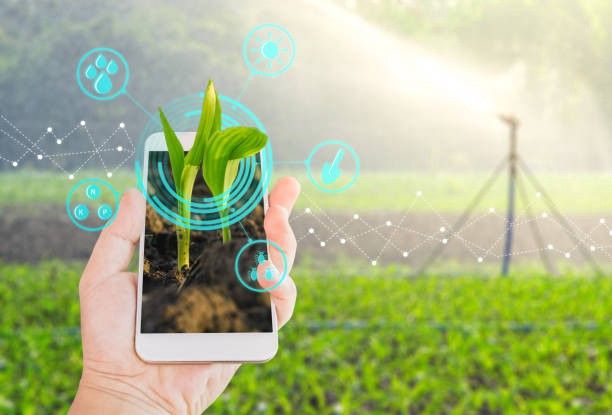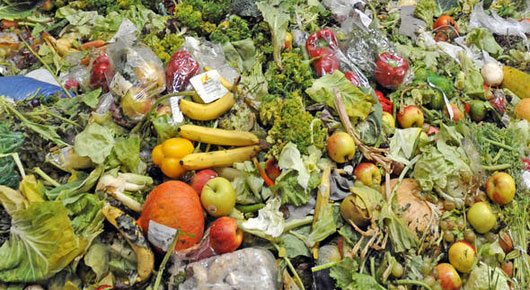How Agritech can Curb Food Loss in Africa

Ironically, most African nations imports agricultural goods that it is capable of producing. Nigeria, for instance, produces cocoa and cotton but buys textiles and chocolates from other nations. Experts have repeatedly emphasized the necessity of preventing food loss and wastage, urging the government at all levels and corporate investors to mop up available crops, add value, and store adequately to arrest shortage in the future. This comes as the rainy season harvest time begins amid a mass food shortage.
The amount of food harvested in Africa is often huge, but the lack of sufficient processing, storage, and preservation technology increases the danger of loss and waste. According to the Food and Agriculture Organization (FAO), around millions of tonnes, or 17% of the total amount of food available to consumers in 2019 went into the waste, that is at the retail and home levels.
There is no doubt that there is a greater demand for food consumption in Africa and globally, mostly because of the rising population each year. In addition to other enduring problems, Africa faces one of the most difficult tasks in the world: feeding its expanding population. Consequently, despite government support for agriculture and the food industry, hunger, undernutrition, and food insecurity are widespread across the continent.
In spite of the fact that there is hunger and undernourishment, Africa loses and wastes a significant amount of its annual food production. One of the main causes is that food loss and waste continue to increase without any meaningful government or commercial intervention.
Unquestionably widespread and significant, food loss occurs throughout the continent along the food supply chain, since the issue of loss and waste has been ignored for so long, Agritech startups are developing innovative solutions to it.
Disruptive Food Loss Solutions
Globally, 14% (worth at an estimated $400 billion) of food is lost from harvest to sale, (FAO, 2019). At the consumer and retail levels, there is an additional 17% waste (UNEP 2021).
Food loss and waste are currently a significant obstacle in the development of sustainable food systems. It has a detrimental effect on food security and nutrition and greatly contributes to biodiversity loss, ecosystem degradation, and environmental pollution.
Within the internationally recognized Sustainable Development Goals, SDG target 12.3 specifies that combating food loss and waste is a priority (SDGs). FAO and the United Nations Environment Programme (UNEP), who are in charge of maintaining this goal, track and measure success in efforts to reduce food loss and waste against the Global Food Loss and Waste Index.

It takes investments in infrastructure, technology, and innovation, as well as governance structures, human capital development, and creativity to realize and maximize the benefits of decreasing food loss and waste.
The steps of the food value chain where food loss frequently occurs are harvest, storage, transportation, and occasionally processing and distribution, according to the literature. According to a research by the Food and Agriculture Organization, FAO, post-harvest food losses in Sub-Saharan Africa are estimated to be worth $4 billion yearly. This is enough to feed at least 48 million people.
Innovatively, 2 approaches are been adopted by Agritech startups to prevent food loss and provide solution to the insufficient Agricultural infrastructure stiffening food security in Africa.
Food Storage Gap and Food Loss
If an entrepreneur or farmer wants to guarantee that food will remain fresh for longer than a day or two, they must be able to store it in a cold environment. That is not feasible for hundreds of millions of people in Africa who lack access to the energy grid and cannot afford pricey refrigeration gear. According to the United Nations, as a result, $4 billion worth of food — enough to feed 48 million people — is lost every year across the continent.
A growing movement now calls for the distribution of inexpensive, solar-powered refrigerators and other alternatives to farmers, small companies, and restaurants in order to significantly reduce food waste, increase profit margins, save the environment, and end hunger. Since food loss is usually attributed to lack of refrigeration, poor market access and other related factors, a simple solution to this problem are startups like Dysmus Kisilu’s Solar Freeze.
Solar Freeze is Cutting Africa’s Food Losses through its Integrated Post-Harvest Management Approach
Rural smallholder farmers who grow perishable products have access to portable solar-powered cold storage systems from Solar Freeze. By keeping the interior at a constant – -20ºC, their invention increases the freshness of perishable items from two days to more than 40 days. People can borrow or rent the solar-powered freezer rooms that are owned by others as part of Solar Freeze’s sharing economy business concept. This drastically lowers the cost of cold storage, making it much more affordable for smallholder farmers. Via SMS, USSD, or voice messaging, users can make requests and payments quickly and affordably.
More players like this with impactful solutions are needed in the struggle to mitigate post-harvest losses.
Bridging the Market Gap
Even though storage facilities can delay the senescence of agricultural products, especially some perishable goods, it cannot last indefinitely. A marketplace’s accessibility is also crucial. The gap between farmers and off-takers has consistently been an issue over time. Agricultural output is likely to go to waste during harvest since there aren’t any ready consumers. Therefore, it is essential to consult with farmers on how to establish marketing cooperatives to sell their produce at fair prices and connect them with anchor purchasers.
If developed, agro-allied industries would also provide a significant source of offtake for farmers who have trouble selling their goods. Many Agritech businesses in the private sector, such Releaf, Twiga Foods, AgroEknor, etc., already have a marketplace that connects farmers.
Releaf is Empowering Smallholder Farmers and Disrupting Food Processing in Africa
The core of Releaf’s service is building proprietary hardware and software solutions to make these farmers and food factories more efficient and profitable, focusing on palm kernel farmers. Releaf buys the palm nuts and process them into palm kernel oil (PKO) before selling to factories. Releaf uses it Kraken machine to achieve fast and easy cracking of palm kernels.
Kenya’s Twiga food launched in 2014 by Peter Njonjo and Grant Brooke uses technology to organize Kenya’s informal retail system. It also aims to build efficient supply chains, with an objective of reducing the cost of food. The startup deals directly with farmers and operates 25 collection centers and a fleet of 50 delivery vehicles. By becoming the largest seller of bananas in Kenya Twiga carries out over 7,000 weekly deliveries to more than 3,500 registered vendors.
In conclusion, Africa must do all it takes to mitigate post-harvest loss. Not merely to ensure food security and keep its residents from going hungry, but also for financial gains—something we have long denied ourselves.
